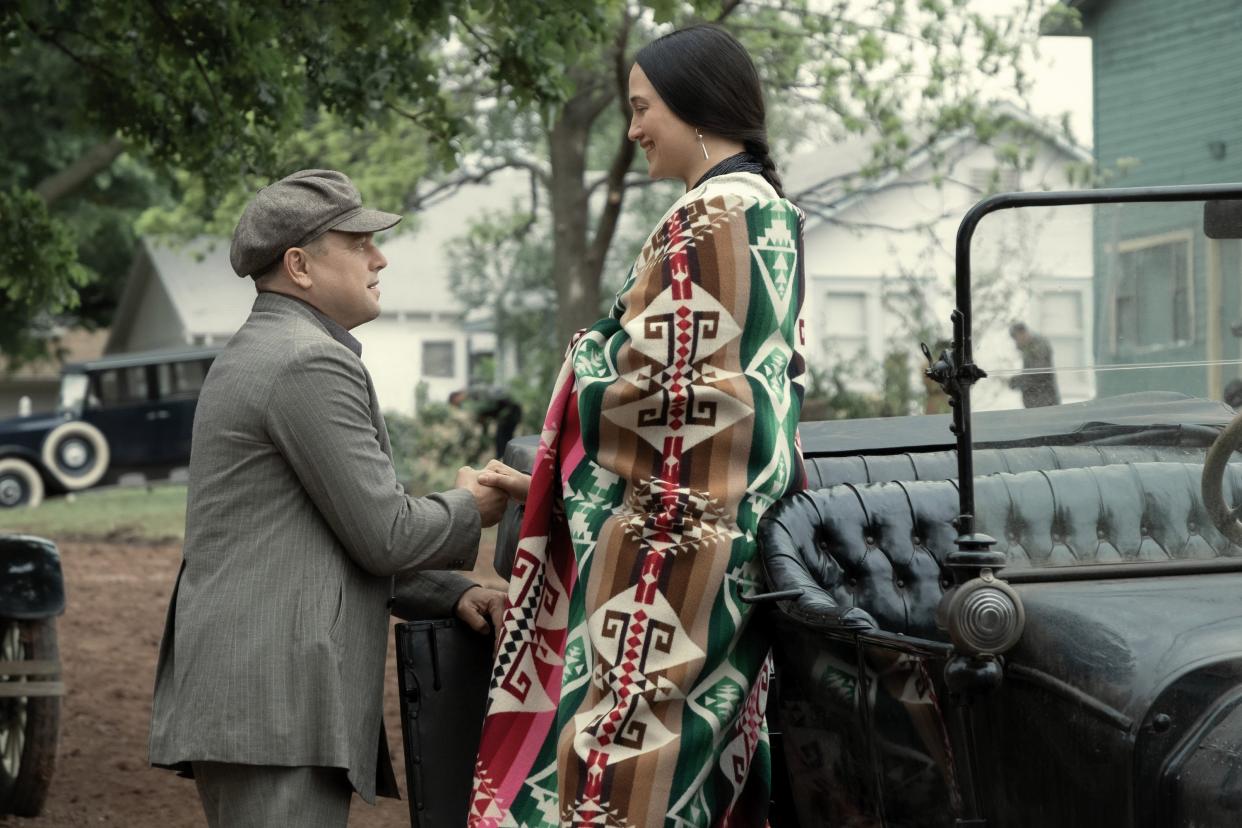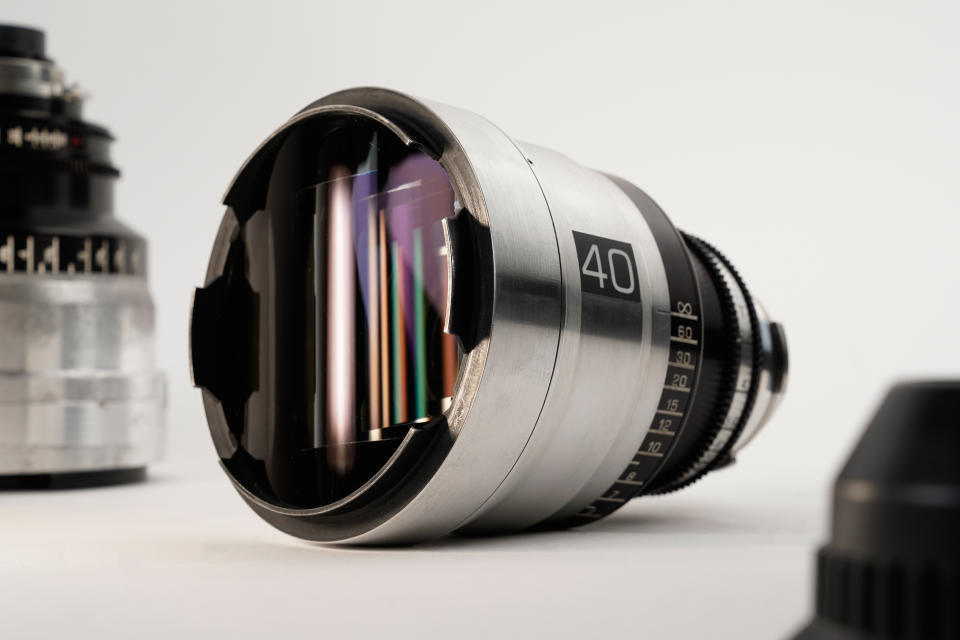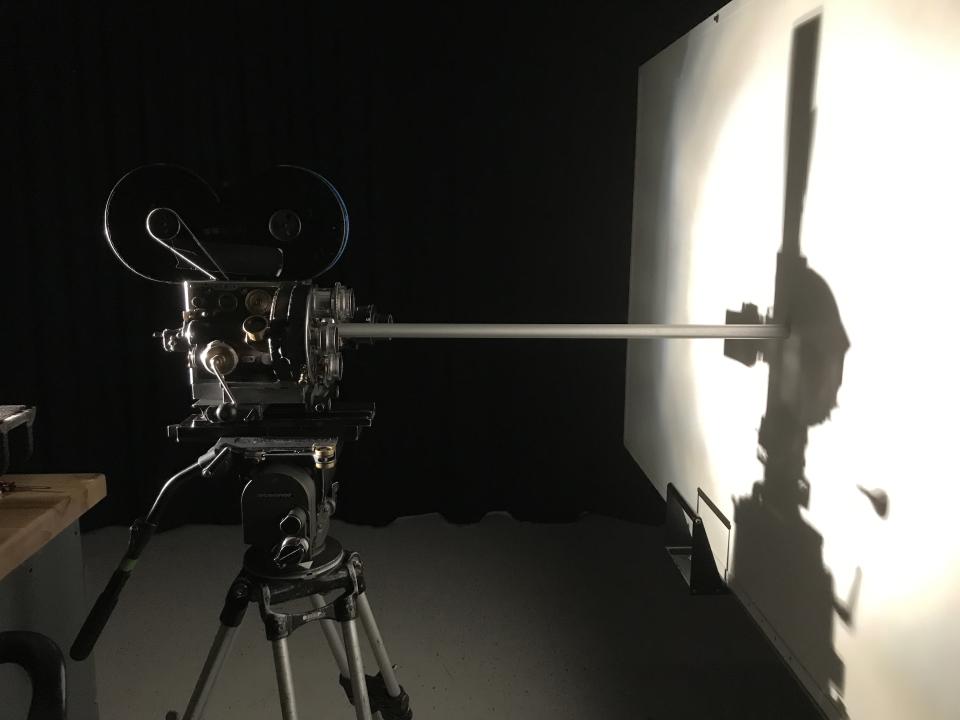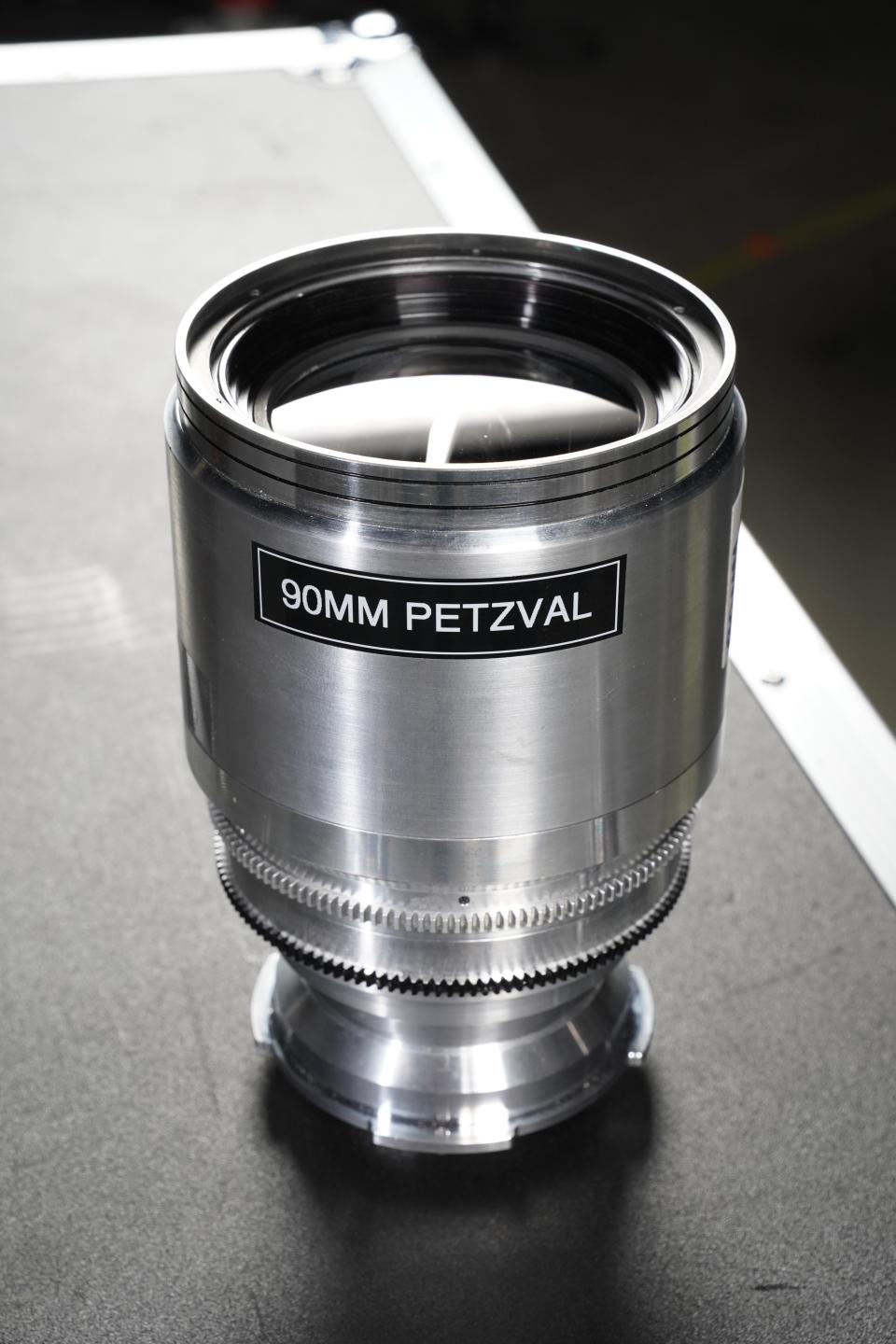‘Killers of the Flower Moon’ Needed a Certain Look — So Panavision Invented It

- Oops!Something went wrong.Please try again later.
- Oops!Something went wrong.Please try again later.
- Oops!Something went wrong.Please try again later.
When cinematographer Rodrigo Prieto reunited with director Martin Scorsese for “Killers of the Flower Moon” (following collaborations on “The Wolf of Wall Street,” “Silence,” and “The Irishman“), the filmmakers knew that they wanted to shoot in an anamorphic widescreen format to capture the vast Oklahoma landscapes. They also knew that they wanted to give the film an authentic period look that would replicate color photography of the era depicted in the movie. The only problem: “There were no anamorphic lenses in the ’20s that I’m aware of,” Prieto told IndieWire. Fearing modern lenses would be too sharp or otherwise incongruous, Prieto had to find a way of using contemporary technology to replicate a hundred-year-old look.
To solve the problem, Prieto turned to the man on whom Paul Thomas Anderson, Christopher Nolan, Quentin Tarantino, and many other major filmmakers rely when they need custom lenses: Panavision’s Senior Vice President of Optical Engineering and Lens Strategy, Dan Sasaki. Although Sasaki downplays his creative contribution — “We’re Dunn-Edwards,” he told IndieWire, “we just supply the paint and then it’s the cinematographer that makes it work” — cinematographers like Prieto and Hoyte van Hoytema (“Nope,” “Oppenheimer”) don’t start a film without him.
More from IndieWire
Next 'Mission: Impossible' Film Moves Back Entire Year to 2025 as Paramount Shuffles Lineup
'Saw X' Cuts Tom Cruise Down to Size on VOD: It's Halloween, After All

In the case of “Killers of the Flower Moon,” Sasaki modified Panavision’s T series lenses to achieve the period style to which Prieto aspired. “We literally put optics from the 1950s inside the lens so it wouldn’t look so modern,” Sasaki said, with Prieto adding that a coating Sasaki applied to the lenses made them softer. “The flare was a little bit warmer than a T series off the shelf,” Prieto said, “and there was a little more distortion on the edges of the screen, which made the lenses feel more vintage.” The lensing, combined with Prieto and Scorsese’s decision to shoot most of “Killers of the Flower Moon” on film, gives the movie a texture reminiscent of the John Ford classics the director loves.
Prieto was able to achieve an even more precise sense of authenticity in the staged newsreel footage he created for the film, which was shot on a 1917 Bell & Howell camera from Scorsese’s own personal collection. “Marty had that camera right there in his living room, on a tripod,” Prieto said. Scorsese had used the camera on other projects, but it had been many years and the camera wasn’t in perfect working condition. Prieto gave the camera to Sasaki and his team to clean up and restore, a mission that was a particular delight for image technology specialist Tommy Rose. “Tommy is the world’s biggest Scorsese fan,” Sasaki said. “He treated the camera like it was his baby.”

The camera came to Panavision in overall good shape but with a couple of turret lenses missing, so Sasaki’s team built some new lenses that would encompass a greater range of focal lengths. “The problem is that the rackover was completely out of calibration,” Sasaki said, “so we took the camera and made a brand new wide-angle viewing attachment with new optics in it that actually parallax properly.” Because the camera lacked a reflex viewing system where the operator could see the image through the lens, Rose designed and built a brass pointer system for marking different focusing distances on the viewfinder; the pointer allowed the viewfinder to be properly aligned from shot to shot to account for the parallax. “Obviously there was no video assist with that camera,” Prieto said, noting that camera assistant Trevor Loomis operated it by learning a song with the right rhythm to hand crank the camera to.
Prieto turned to another antiquated piece of photographic technology for shots of the murder victims throughout the film. “Dan gave us some anamorphic Petzval lenses, which of course don’t exist,” Prieto said. The Petzval lens was initially created in 1840 and was the first portrait objective lens in the history of photography; for Prieto, it created just the right sort of distorted background curvature to express the sense of clinical horror he wanted to convey in the overhead images of dead bodies.

“The Petzval lens, which was designed for still photography, is the first mathematically designed lens,” Sasaki added. “It’s very precise — it’s almost a perfect lens when used properly.” That said, there is a wide range of gradations in terms of its properties depending on how the lens is modified. “We had to ask Rodrigo if he wanted a Petzval that’s gimmicky and has a lot of swirls and edges falling off, or did he want a Petzval that has a really nice focus that falls off like a normal balanced lens without so much curvature. We came to find out that he liked a little bit of the swirl, but not over the top.”
The collaboration between Prieto and Sasaki ultimately intersected with the collaboration between Prieto and Scorsese to generate some of the most distinctive and dramatically expressive images in any film so far this year, though it’s a partnership that remains a mystery to both members even after decades of work together. “Sometimes I’ll test the lenses, and they look terrible,” Sasaki said. “But you see how a master [like Rodrigo] uses them, and it’s amazing.” “I don’t know exactly how he does it,” Prieto said of Sasaki. “It’s magic, right? He’s a magician in the lab performing alchemy.”
“Killers of the Flower Moon” is currently in theaters.
Best of IndieWire
Where to Watch This Week's New Movies, from 'Killers of the Flower Moon' to 'The Pigeon Tunnel'
The 60 Best Sci-Fi Movies of the 21st Century, from 'Melancholia' and 'M3GAN' to 'Asteroid City'
Sign up for Indiewire's Newsletter. For the latest news, follow us on Facebook, Twitter, and Instagram.

